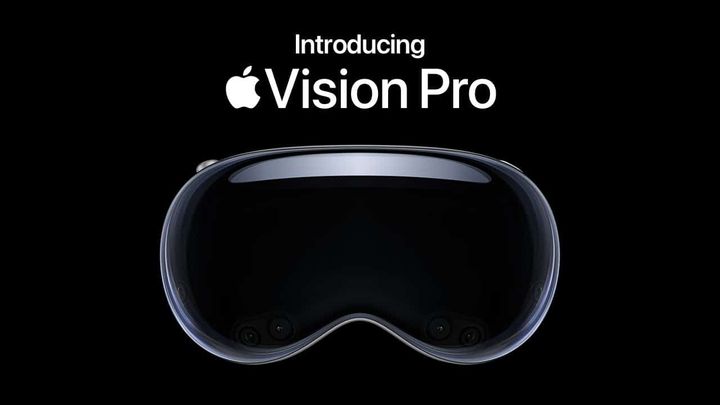What is the Facebook Pixel and How Does it Help Your Business?
Improve your marketing strategy with an inside look at the Facebook Pixel: what it is, why you need it and how to use it.

Improve your marketing strategy with an inside look at the Facebook Pixel: what it is, why you need it and how to use it.
The Facebook Pixel is an invaluable tool for marketers looking to create targeted, effective ads. Learn all about the Pixel, from what it is and why you need it to how to install and use it for your business' marketing strategy.
Understand What the Facebook Pixel is.
The Facebook Pixel is an incredible piece of technology that allows businesses to track users’ activity on their website. With the help of the Facebook Pixel, marketers can create dynamic, targeted advertisements and drive more customer engagement. Put simply, without a pixel you won’t be able to take advantage of all the amazing features available on Facebook Ads platform.
Additionally, a few key features of the Facebook Pixel are that it allows marketers to measure how effective their ad campaigns are, track conversions and sales, retarget website visitors who haven’t taken the desired action yet, optimize ads for more conversions and purchases and much more. In order to use the pixel effectively, one must first learn how to install it on their website. After successful installation, you can configure events for tracking user actions such as registration, home page visits or an abandoned cart. Also depending on your preferences you may exclude certain users from viewing ads like current customers or recent purchasers. Making use of these features requires careful attention and expertise as it is essential in getting accurate tracking data and therefore optimum performance from your digital campaigns.
Learn How to Install It.
Once you have your Pixel code generated, you need to install it on your website. To do this, you'll need to add the Pixel base code in the header of all your webpages. Then, depending on what data you're looking for, use extra code snippets known as "events" to track user behaviour such as purchases or sign ups. After that, the Facebook Ads Manager and Business Manager can help you keep an eye on how well your campaigns are performing at any time.
While implementing the Pixel code may seem like a lot at first, you can use the Facebook Debugger to debug and test your code before installing it. Additionally, there are tons of tutorials online that offer further support with Pixel set up if needed. Once installed and running, the insights from your ads campaigns will help you better understand what works and what doesn’t during each step in the customer journey. Ultimately, this means you can tailor content specific to a user’s behaviour on your website, leading to improved user experiences and increased ROI for all of your campaigns.
Photo by Timothy Hales Bennett / Unsplash
Few More Points
The Facebook Pixel works alongside your ad campaigns to generate information and insights about those who’ve interacted with your ads. It acts like a piece of tracking code which is placed on certain pages across your website so you can measure, optimize and build audiences for your campaigns. When enabled, it collects data such as page views, purchases, add-to-cart actions and more. All of this data can then be used to create dynamic, laser-focused ad campaigns tailored to each user’s interests. After all of the added optimization possibilities that come from using The Facebook Pixel--including retargeting users who have abandoned their cart--you’re sure to see an uptick in Conversions when setting it up properly!
Setting up The Facebook Pixel is a simple process in the Ads Manager, which can be done in a few steps. First, name the pixel to differentiate your website from any other. Then enter and save the piece of code provided by Facebook on your website pages and test it to make sure it’s running correctly. You can also manually generate pixel events for each page you’d like to track and add these events into the appropriate templates on webpages if needed. Once setup is complete, you can start using powerful optimization features based on conversion data such as Audience Insights, Enhanced Conversion Measurement and Custom Audiences. Be sure to regularly review any information gathered by The Facebook Pixel to keep all of your campaigns optimized!
Step & Procedure
- Create a Facebook Ad account: Go to Facebook.com and create a Facebook Ad account if you don't already have one.
- Create a Facebook Pixel: Go to the Facebook Events Manager and click on the Pixels tab. Then click on the "Create a Pixel" button to create a new pixel for your website.
- Install the Facebook Pixel code on your website: You will be provided with a pixel code that you need to install on your website. You can either copy and paste the code manually into the header section of your website's HTML or use a tag manager like Google Tag Manager to install the code.
- Verify the installation: Verify the installation of your pixel by using the Facebook Pixel Helper Chrome extension or by checking the Facebook Events Manager to see if any events have been recorded.
- Set up Standard Events: Once your Facebook Pixel is installed and verified, you can set up Standard Events to track specific actions that occur on your website, such as purchases or lead forms.
- Start using the Facebook Pixel: After setting up Standard Events, you can start using the Facebook Pixel to track conversions and create targeted Facebook Ads.
Ensure you follow Facebook's guidelines for using the Facebook Pixel and Standard Events.
Use Your Pixel Data Wisely.
Once your Pixel is set up and functioning, you'll be able to benefit from its data. This data can help inform your marketing decisions by giving you insights into website visitors' behaviours. The most common way to use this data is by creating "lookalike audiences" based on current customers. A lookalike audience will include more people who are likely to be interested in your product or service - increasing the chances of successful campaigns and a larger audience.
Gathered Data
Use the data gathered from Facebook pixels to your advantage by utilizing segmented audiences. This means you can create targeted ads and campaigns geared towards different niche markets, such as people who live in specific parts of the world or those with certain interests. Not only will this allow you to better understand your target audience’s individual behaviours, but it makes for more cost-effective campaigns since you’re not wasting money targeting users that may not convert.
Analyze Data
As with any data-focused resource, it's important to look not just at raw numbers but also the quality of interactions from that data. Analyze aggregate audience signals like email clicks and website visits to see whether or not they are genuine, as well as other engagement metrics like video views, comments and shares. That way you’ll be able to fine-tune any advertising campaigns, rather than blindly relying on what could be misleading macro insights alone. Data analysis is quickly becoming one of the most in-demand employment paths.
Utilize Custom Audiences & Retargeting Strategies.
The Facebook Pixel allows you to track the effectiveness of your ads by creating custom audiences based on website visitors' actions. A custom audience is a group of people who have shown they’re interested in what you’re offering. Whether they’ve added products to their cart, spent more than a few seconds on your landing page, or already made a purchase from your online store - the Facebook Pixel tracks this information and uses it to target them with ads tailored for them. Retargeting strategies can be used to remind past website visitors about your services and/or products, increase website visits, and boost sales.
The easiest and most cost-effective way to use the Facebook Pixel is to leverage “remarketing.” Think of remarketing as an opportunity to reinforce your message and offer after a website visitor has left the site. You can target custom audiences with brand recall ads or promotions of similar products that the user had viewed, increasing the likelihood of conversion. For example, if someone leaves your site without buying a particular product, you can create a targeted ad for that individual reminding them about the product they were interested in. Utilizing custom audience targeting strategies opens up new opportunities for more effective campaigns and allows businesses to reach customers where it matters most –on their favorite social media platform.
Photo by Stephen Phillips - Hostreviews.co.uk / Unsplash
Track, Maximize & More
By installing the Pixel, small businesses can better track and maximize their ad spend, optimize for conversions, and measure ROI far more accurately than before. With data from the pixel, businesses have access to detailed analytics regarding customer behavior on the site, allowing owners to make data-driven decisions about their advertising strategy. Additionally, targeting campaigns with specifically defined audiences—such as people who have visited a page or added items to an online shopping cart but not converted—allows for more efficient usage of budget. This increased level of detail enables marketers to understand what works in terms of converting customers at different stages of the funnel rather than launching generalized campaigns that target all website visitors.
Monitor Your Metrics for Improved Performance & Engagement.
With the Facebook Pixel installed on your site, you’ll be able to track which pages are most popular and active among your customers, measure the effectiveness of your current campaigns, and gain insight into who exactly is viewing your ads. As tailored tracking data begins to arrive from the Facebook Pixel, it’s important to understand what these figures mean and how they can improve or adjust future actions or projects. You can also use this collective data to make decisions about target audiences or optimize lead generation strategies. This is an invaluable resource as it links directly back to ROI and allows you to craft a more rewarding customer experience.




